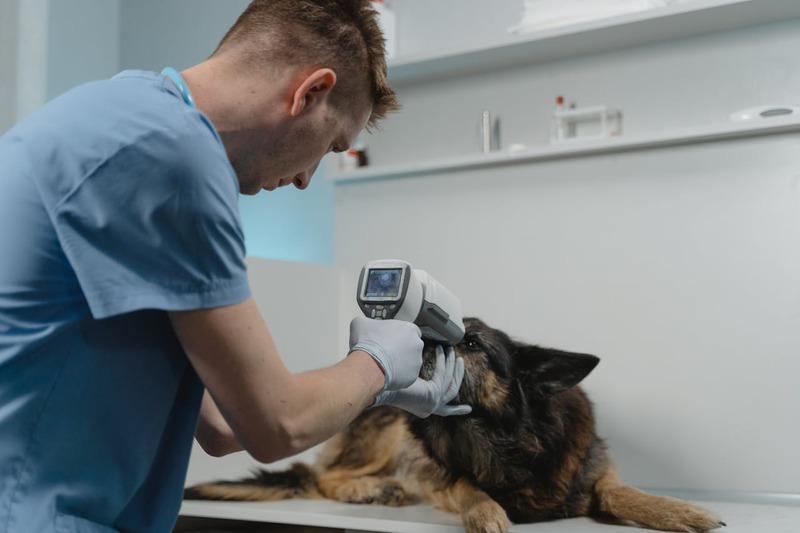What Are the Common Steps in Veterinary Triage for Pets?

When your furry friend is in distress, nothing matters more than getting them the care they need as fast as possible. Whether it’s an ear infection or something more serious, such as a car accident, our pets rely on us to find help when they can’t help themselves. That’s where veterinary triage comes into sharp focus, as the process is designed to assess and prioritize pets’ medical needs based on the urgency of their conditions. If you’re a pet owner, understanding the process of triage can help you stay calm and make informed decisions in times of emergency. So, let’s take a closer look at the steps veterinarians take during this critical process.
What is Veterinary Triage?
Just like in human healthcare, veterinary triage is the first line of defense when dealing with medical emergencies. The principle behind triage is straightforward. It’s all about assessing each pet’s condition to determine who needs immediate attention and who can wait a bit longer for care. Now, let’s dive into the usual steps your vet will take when you arrive at the clinic with your pet in an emergency.
Step 1: Quick Assessment
The moment you set foot in the vet’s office, a veterinary professional will lay eyes on your pet. They’ll perform a swift, initial assessment to gauge the severity of your pet’s condition. During this quick check, they’ll look for signs like:
Difficulty breathing
Extreme pain
Excessive bleeding
Signs of shock
Step 2: Gathering Information
While one team member is assessing your pet, another might start asking you a series of questions. These are vital in helping the vet understand your pet’s medical history and the events that led to the current situation. You’ll likely be asked about:
Recent injuries or illnesses
Medications your pet is taking
Any known allergies or previous reactions to medications
Behavioral changes
Step 3: Priority-Based Treatment
Based on the quick assessment and information gathered, the veterinary team will decide on the urgency of the situation. Pets with life-threatening conditions will receive immediate care. In contrast, those with less critical issues may need to wait while more serious cases are attended to first. This might be difficult when you’re worried about your pet, but it’s an essential part of ensuring that all pets get the right level of care when they need it most.
Step 4: Stabilization
For pets in critical condition, the next step is stabilization. This often involves:
Administering fluids for dehydration or shock
Stopping any bleeding
Alleviating severe pain
Stabilizing fractures or other injuries
Managing breathing difficulties
Step 5: Further Diagnosis
Once your pet is stable, the veterinary team will perform additional diagnostic tests to understand the underlying problem better. This is where a pet diagnostic test in Lacey would come into play, offering detailed insights into your pet’s health. Depending on your pet’s symptoms, these tests might include blood work, X-rays, or ultrasound.
Step 6: Treatment Plan
Using the results from the further diagnostics, your vet will formulate a treatment plan best suited to your pet’s needs. This might involve surgery, prescription medication, a stay in the hospital for monitoring, or a combination of treatments. Remember, the goal is always to provide the best possible outcome for your furry companion.
Step 7: Communication with the Pet Owner
Good communication is key, and the vet will keep you informed about your pet’s condition, the proposed treatment, and any costs involved. This is the time to ask questions and discuss any concerns you might have. If you’re unsure about where to turn for emergency care, understanding that there is emergency pet care in Lacey can give you peace of mind that help is close by when seconds count.
Step 8: Ongoing Assessment
Even after initial treatment, the vet team will continue to monitor your pet’s vital signs and response to treatment. If necessary, adjustments to the treatment plan will be made. This ongoing attention ensures that your pet recovers as swiftly and comfortably as possible.
Step 9: Aftercare and Instructions for Home Care
Once your pet is stable enough to go home, you’ll receive detailed instructions on caring for them. This might include how to administer medication, signs of potential complications, restrictions on activity, and a schedule for follow-up appointments. Following these instructions closely is crucial for your pet’s recovery.
If you’re interested in a facility that can offer such quick and efficient veterinary triage and want to know more about the professionals who will be taking care of your pet, you can learn more about their hospital by visiting their website or giving them a call. Many hospitals are transparent about their procedures and happy to educate pet parents on their protocols.
Final Thoughts
Veterinary triage is a planned protocol for effective emergency care. Knowing the steps helps you support your pet and collaborate with the vet team for a successful outcome. Feeling overwhelmed is natural, but understanding the process can reduce stress. Hopefully, you won’t need an emergency trip, but if you do, you’re now better prepared. Your love and quick thinking, combined with the veterinary team’s expertise, will aid your pet’s recovery.


